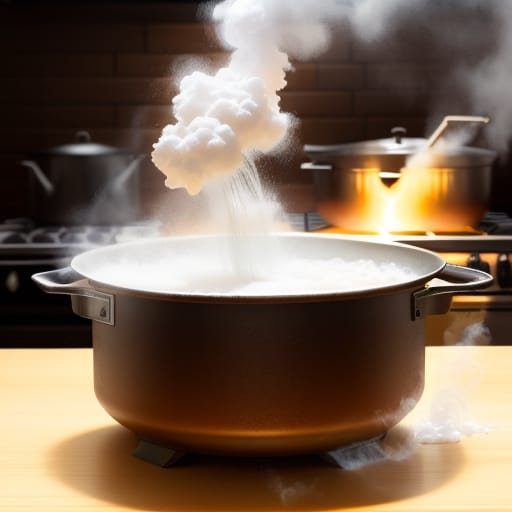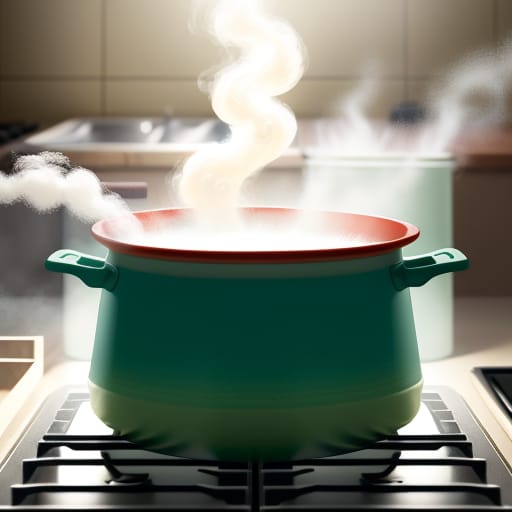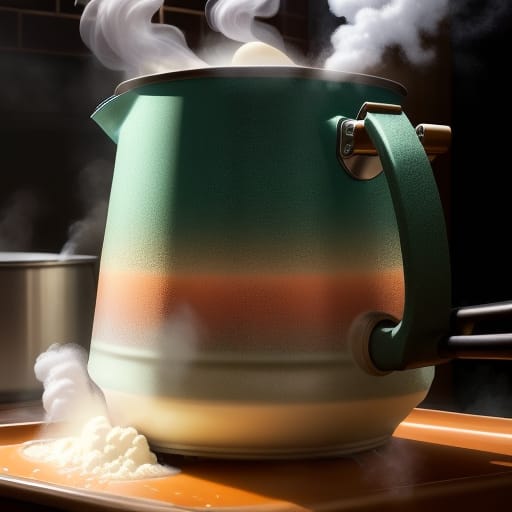Borax crystals are a classic science experiment for kids and adults. Making these dazzling crystals seems simple enough – just mix some borax powder with water and pipe cleaners. But is the process truly safe? This beginner’s guide covers everything you need to know about the safety of making your own borax crystals at home.

What Are Borax Crystals?
Borax, also known as sodium borate, sodium tetraborate, or disodium tetraborate, is a natural mineral compound. In its crystallized form, it takes the shape of white or colorless crystals.
Borax has a wide range of household and industrial uses. It is commonly found in laundry detergents, cosmetics, enamel glazes, and insecticides. In science, borax is used as a buffer, anti-corrosion agent, flux, and neutron absorber.
When borax powder is combined with water, it forms a saturated solution. As the water evaporates, the borax crystallizes into geometric shapes. This crystallization process is what allows borax crystals to form.
Brief History of Borax Crystals
Borax crystals have been used and traded by humans for thousands of years. Borax was first discovered in dry lake beds in Tibet and was imported via the Silk Road trading routes all the way to the Arabian Peninsula. Marco Polo is believed to have brought borax back to Italy from Asia in the 13th century.
In the late 19th century, large borax deposits were found in Death Valley, California. Commercial borax mining and production began in the Mojave Desert, making borax more widely available. Borax was heavily marketed as a household cleaner by 20 Mule Team Borax.
Making borax crystals became popular in the 1960s and 70s as a science experiment for classrooms and hobbyists. It remains a classic science project today, as borax is inexpensive, safe, and easy to crystallize at home.
Why Make Your Own Borax Crystals?
There are many reasons why making your own borax crystals at home is a rewarding activity:
- Educational – Borax crystals are a great way to learn about chemistry, crystallization, and minerals. The process teaches kids about chemical reactions and crystalline structures.
- Fun – Growing colorful crystals is an exciting experiment for both kids and adults. Adding food dye creates pretty designs.
- Decorative – The crystals can be used to decorate homes, centerpieces, or floral arrangements. You can craft them into jewelry and ornaments.
- Customizable – Borax crystals can be modified in many ways. You can play with different sizes, shapes, and colors.
Borax Crystal Safety Precautions
Making borax crystals is generally safe, but does require some basic safety precautions:
Eye Protection
- Wear eye protection like safety goggles when handling the borax powder. Borax can be irritating to the eyes.
Gloves
- Wear gloves when making the borax solution, as it can dry out your skin. Rubber, latex, or nitrile gloves work best.
Adult Supervision
- Children should not handle borax or hot liquids without adult supervision. Adults should assist with any heating or pouring.
Ventilation
- Making crystals should be done in a well-ventilated area. Avoid inhaling any borax dust.
Skin Contact
- Avoid prolonged exposure of skin to the borax solution. Wash exposed skin after contact.
With some simple precautions, you can make borax crystals safely. Just be sure to follow directions carefully. Now let’s look at what supplies are needed.
Materials Needed to Make Borax Crystals

Growing borax crystals at home requires just a few simple supplies:
Borax Powder
- The key ingredient! Look for pure borax, like the 20 Mule Team® brand. Need about 1-2 tablespoons.
Water
- Distilled water works best. You’ll need 1 cup of water.
Pot
- A small pot with a lid is needed to heat up and mix the water and borax.
Pipe Cleaners
- These act as the base for the crystals to form on. Cut into 2-3 inch pieces.
Food Coloring (optional)
- Adds color and vibrancy to the crystals. Use drops of liquid food coloring.
Measuring Spoons
- For accurately measuring borax powder and water amounts.
That’s it for supplies! Most households will already have these basic ingredients and tools. Now let’s get into the crystal making process step-by-step.
Step-by-Step Instructions for Growing Borax Crystals
Follow these steps to grow your own dazzling borax crystals:
1. Make Borax Solution
- Add 1 cup of warm distilled water to a small pot.
- Slowly mix in 2 tablespoons of borax powder. Stir continuously until fully dissolved.
2. Super Saturate the Solution
- Heat the borax solution over low heat, stirring periodically.
- Keep heating until no more borax will dissolve. You want the solution to be supersaturated.
3. Add Food Coloring
- Optional step! Add a few drops of food coloring to the heated solution and stir.
- You can use one color or mix colors for a rainbow effect.
4. Shape Pipe Cleaners
- While solution cools, shape your pipe cleaners into different forms.
- Try coils, zig-zags, rings, waves, or triangles. Get creative!
5. Place Pipe Cleaners in Solution
- Wait until borax solution cools to room temperature.
- Slowly lower pipe cleaner shapes into the solution.
- Cover the pot and leave it undisturbed overnight.
6. Remove Crystals
- In 8-12 hours, shining borax crystals will form on the pipe cleaners.
- Carefully remove pipe cleaner shapes with crystals.
- Rinse off any excess solution and allow to dry.
- Admire your homemade borax crystals!
Follow these steps carefully, and you’ll be growing gorgeous borax crystals in no time. Next up, tips and tricks for taking your crystals to the next level!
Tips for Growing Better Borax Crystals
Growing picture-perfect borax crystals involves some trial and error. Follow these tips for improving your results:
Use Humid Weather
Borax crystals grow best in high humidity. Try making them on rainy, foggy, or extremely humid days for optimal crystallization.
Try Neon Food Colors
For bright, vivid crystal colors, use neon food gel or liquid food colors. They contain more concentrated pigments than regular food dyes.
Pick Decahydrate Borax
Borax is sold as decahydrate (10H2O) and anhydrous (Na2B4O7). Decahydrate borax is best for crystal growth since it contains water.
Add Boric Acid
Adding a bit of boric acid to your borax solution can speed up crystallization. The acid helps stabilize crystal formation.
Be Patient
It can take up to 1-2 weeks for borax crystals to fully form. Don’t rush the process. Slow crystallization creates the best results.
With practice and patience, you’ll get better at growing high-quality borax crystals. Let’s look now at the science behind how these crystals actually form.

The Science of Borax Crystals Explained
Growing crystals is an impressive chemical process that results in precise, geometric structures. Here’s the science behind borax crystal formation:
1. Boron Bonds with Water Molecules
- Borax powder is made up of sodium borate molecules (Na2B4O7 • 10H2O).
- When borax is mixed into water, the boron atom bonds with H2O water molecules to form boric acid (H3BO3).
2. Boric Acid Reaches Saturation Point
- As more and more borax powder dissolves, the solution reaches a saturation point.
- At this point, no more boric acid can dissolve into the water. The solution becomes supersaturated.
3. Evaporation Causes Crystallization
- As the water slowly evaporates from the cooled solution, the dissolved boric acid is forced out of the solution.
- The boric acid arranges itself into an orderly crystalline structure around the pipe cleaners.
- Given enough time, large, faceted borax crystals slowly accumulate on the pipe cleaner.
The unique chemical makeup of borax allows it to crystallize into giant structures when saturated and evaporated. Next, we’ll explore creative variations beyond basic borax crystals.
Borax Crystal Variations to Try
While simple clear and colored borax crystals are beautiful, there are many creative variations to try:
Borax Crystal Geodes
- Grow borax crystals inside an eggshell to create a stunning crystal geode.
Borax Crystal Rock Candy
- Dissolve sugar and flavoring like peppermint into the borax solution to create rock candy crystals.
Borax Crystal Magma
- Add red food coloring and alum powder to create bubbling “magma” crystal structures.
Needle Crystals
- Use a saturated solution and nylon thread to grow needle-like borax crystal spikes.
Mixed Crystals
- Combine borax with another crystal ingredient like alum or Epsom salts. This creates complex crystals.
Get creative with shapes, add-ins, and display methods! Now let’s talk about the magical side of borax crystals…
Dazzling Borax Crystal Magic Tricks
Borax crystals aren’t just gorgeous – they also enable some mind-bending magic tricks! Here are two magical effects you can try:
Disappearing Crystal Trick
- Grow a crystal on a pipe cleaner twisted into a spiral shape.
- When removed from the solution, the spiral will be coated with crystals.
- Slowly pull the spiral apart to reveal a seemingly solid crystal structure.
- As you pull, the crystal will magically disappear before your eyes!
Color-Changing Crystals
- Create two batches of crystals using food coloring – one red and one blue.
- Alternate dipping a pipe cleaner into the red solution, and then the blue solution.
- The resulting crystals will be striped red and blue. But when you put the crystals in water, the colors will blend and change.
With the right setup, borax crystals can help you perform magic tricks that kids and adults will love. Next, let’s talk about how to involve kids safely.
Making Borax Crystals with Kids
Growing crystals is a wonderful science activity to do with children. Here are some tips:
Adult Supervision is Key
- Children under 12 shouldn’t handle borax powder, boiling water, or hot plates without adult help.
Focus on Fun Shapes
- Let kids use their imagination to bend pipe cleaners into fun shapes like hearts, stars, or unicorns.
Choose Kid-Friendly Colors
- Pick food dyes in their favorite colors. Avoid high-contrast neon shades which are harder to see.
Try Kool-Aid Dye
- For vibrant food coloring without the mess, use a presweetened Kool-Aid drink mix instead of liquid dye.
Watch Tutorial Videos
- Get kids excited by watching borax crystal time-lapse videos together on YouTube.
With a few precautions, growing crystals makes an excellent science activity for kids as young as 6. There’s still plenty for adults to enjoy too!
Fun Ways Adults Can Use Borax Crystals
Don’t let the kids have all the crystalline fun – there are many ways adults can put borax crystals to use:
Craft Crystal Jewelry
- Create pendants by gluing colorful crystals onto chains or leather cords with E600 glue.
Decorate with Crystals
- Use strong glue to affix borax crystals to candles, vases, or holiday decorations for sparkle.
Grow Giant Crystals
- Challenge yourself to grow extraordinarily large single crystals by supersaturating the solution.
Make Crystal Garden Art
- Design a contemplative Zen crystal garden using borax crystals in sand or soil.
Conduct Advanced Experiments
- Take crystals to the next level by tracking their growth rate in different conditions.
The possibilities are endless for crafters, hobbyists, and science enthusiasts. Read on to learn how borax crystals are used in education.
How Borax Crystals Are Used In Education
Borax crystals are an important tool for teaching science and mineralogy:
Chemistry and Crystallography
- Borax crystals demonstrate molecular geometry, symmetry, crystal lattices, and molecular polarity.
Geology and Mineralogy
- Studying their distinct crystalline shapes introduces concepts like face, matrix, and habit.
Data Analysis
- Students can measure crystal size under different conditions and analyze the data.
Chemistry Lab Practical
- Crystallization lab activities teach concepts like solubility, saturation, and bonding.
Research and Microscopy
- Advanced students can study natural tetragonal borax crystals under a microscope.
There are many depths to explore with borax crystals through education. But are there any risks or dangers? Let’s investigate the safety concerns.
Potential Borax Crystal Safety Concerns
While generally safe, here are a few borax crystal risks to keep in mind:
Eye Irritation
- Borax powder or solution may irritate the eyes if exposed. Wear eye protection.
Respiratory Irritation
- Inhaling borax dust can irritate the nose, throat, and lungs. Work in a ventilated area.
Skin Irritation
- Prolonged exposure to borax solution can dry and irritate skin. Wear gloves and wash hands.
Toxic if Ingested
- Consuming high amounts of borax can cause nausea and vomiting. Keep away from children.
Reproductive Harm (unproven)
- Some claim borax can affect fertility and cause developmental issues, but these risks are unproven.
With basic precautions, borax is safe for household use. However those with health conditions or pregnant women may wish to avoid working with borax.
Health Effects and Toxicity of Borax Crystals
While the risks are low in small amounts, here’s an overview of how borax can affect the body:
Skin Contact
- Borax is a skin irritant. Prolonged exposure may cause dryness, redness, burns, or dermatitis. Always wash your skin after contact.
Inhalation
- Inhaling borax dust irritates the nose and throat. It may cause coughing, wheezing, and breathing issues in those with asthma or allergies.
Ingestion
- Significant ingestion of borax can cause nausea, vomiting, diarrhea, and other gastrointestinal issues.
Reproductive Effects
- Animal studies suggest high borax doses may reduce fertility or cause developmental effects. But human data is lacking.
Bleach Contamination
- Some claim combining borax and bleach releases toxic gas. But borax is generally compatible with bleach.
The amount of borax used for crystals is very small and risks are low. But anyone with health concerns should check with a doctor before use.
Is It Safe to Make Borax Crystals? Our Conclusion.
In conclusion, making borax crystals is a safe and rewarding science experiment when basic precautions are followed. Use eye and skin protection, avoid ingestion or inhalation, provide adult supervision for kids, and work in a ventilated environment. While no process is 100% without risk, the dangers are low for household borax crystal projects. Take reasonable safety measures and dazzling crystals can be created hassle-free for educational enjoyment and decorative fun.
To learn more, check out these additional resources:
- How to Grow the Best Borax Crystals – Step-by-step instructions from Thoughtco.
- Is Borax Safe? – Overview of borax safety concerns from Healthline.
- How Does Borax Work? – Explanation of borax chemistry from 20 Mule Team® Borax.
- Growing Crystals for Kids – Crystal experiments from KiwiCo are perfect for children.
We hope this beginner’s guide provides you with everything you need to know to make dazzling borax crystals safely at home. Happy crystal growing!
Here are 5 FAQs related to the safety of making borax crystals that I have added to the end of the article:
Frequently Asked Questions
What are the health risks of borax crystals?
Borax can irritate the skin, eyes, nose, throat, and lungs if proper precautions are not taken. Ingestion of large amounts can also cause gastrointestinal issues. However, the small amounts used for crystal growing have very low risks with proper handling. Those with asthma or pregnant women should consult a doctor before use.
How can I make borax crystals safely?
Use safety goggles, gloves, and good ventilation when handling borax powder. Avoid inhaling any dust. Supervise children closely, and follow all instructions for safe dissolution and heating. Also, take care to avoid ingestion of the borax solution. With reasonable precautions, borax crystals can be made safely.
What if borax gets in my eyes?
Immediately rinse eyes with cool water for 15 minutes if borax makes contact. Remove contact lenses first. Seek medical advice if irritation persists. Wear protective eyewear when handling borax powder to prevent eye exposure.
Can borax crystals irritate the skin?
Yes, borax can dry and irritate skin. Avoid prolonged skin exposure to the solution. Wear gloves while making crystals and wash your hands afterward. If skin becomes irritated, use lotion to soothe and moisturize. If irritation is severe, seek medical advice.
Are borax crystals safe for kids?
Yes, with supervision. Borax crystals can be a fun educational science activity for kids, but adults should handle any heating or pouring and oversee use. Ensure good ventilation and have kids wear gloves and goggles. Use child-safe food coloring. Follow instructions carefully and keep crystals out of reach when formed.